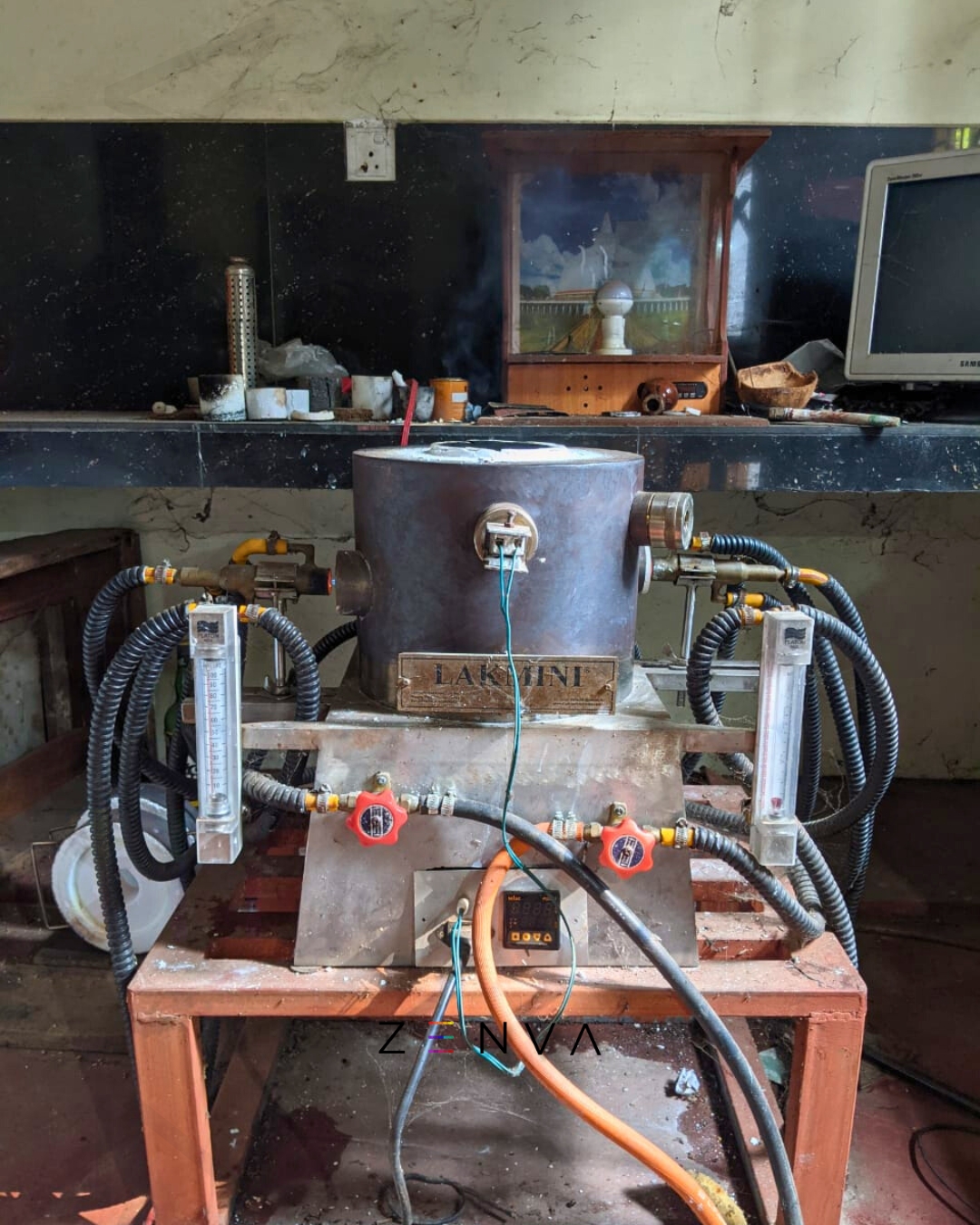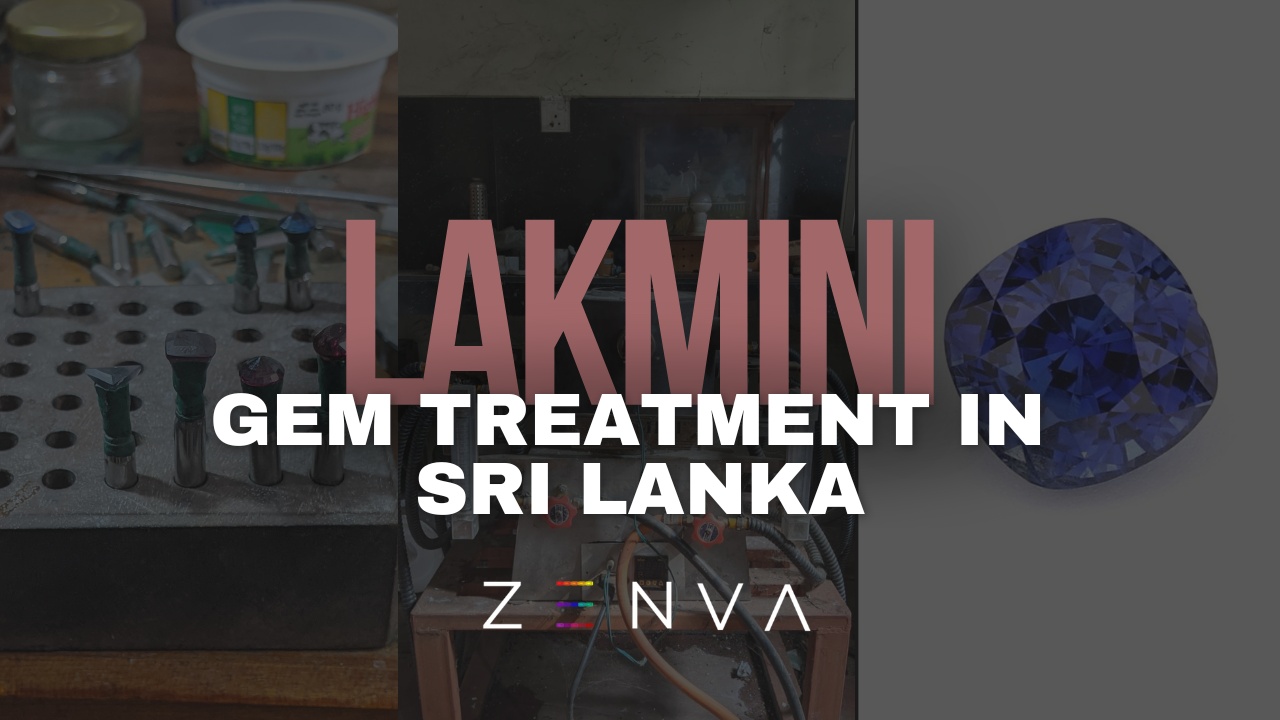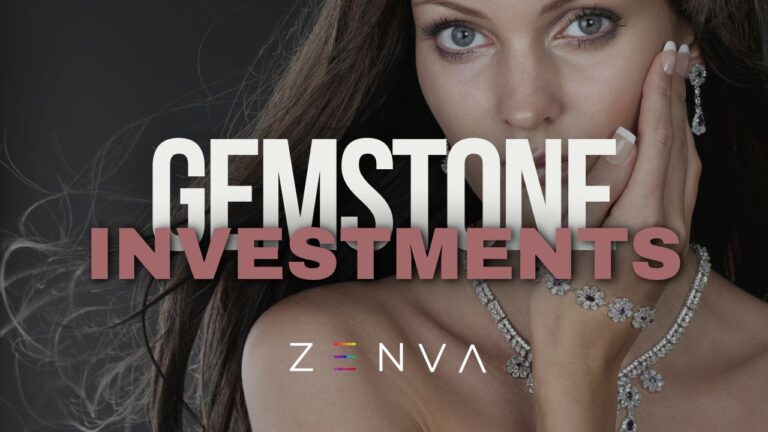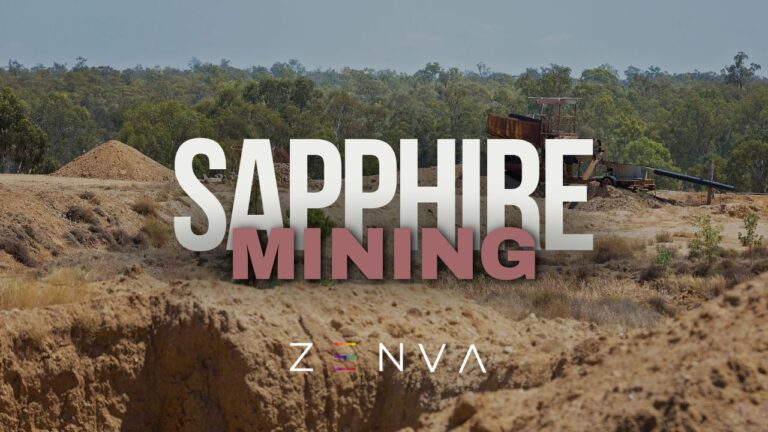For many years, the Sri Lankan gem industry has been famous for some of the world’s most beautiful gems, especially sapphires. Though the country boasts so many fine natural sapphires, traditional processing methods were somehow limited, especially when it came to transforming ‘Geuda,’ or white sapphires, into the more valuable blue sapphires. This Lakmini furnace has made all that change and introduced technology in leaps for the local gem-treatment industry.
The Challenge of Turning Geuda
These geuda sapphires, high in silky rutile inclusions, generally have a milky or opaque nature. Heat treatment absolutely becomes necessary in such a sapphire to acquire the highly prized blue color. Traditionally, that was done by blow pipe heating methods, which were highly labor-intensive and very inconsistent. Due to these limitations, most of the sapphires were sent to Thailand from Sri Lanka—places where advanced heat treatment techniques were available for higher price addition at the cost of losing value addition within Sri Lanka.
The Invention of the Lakmini Furnace
All these irksome factors resulted in the development of the Lakmini furnace to increase the efficiency and quality of heat treatment of sapphires within Sri Lanka. This has been an innovative furnace, cylindrical in aluminum chamber makeup with an alumina mixture, capable of holding 700 carats of sapphire at a time. In its design is incorporated even heat distribution with a provision for very fine temperature control, very important to change Geuda into beautiful blue sapphires.
Lakmini Furnace Features
- Alumina Mixture Chamber: It is cylindrical, made of very hard alumina mixture to present resistance to high temperatures needed to treat the sapphires.
- Capacity: The furnace has the capacity for up to 700 carats of sapphires—ideal for small-scale and large-scale operations.
- Dual LP Gas and Oxygen Supplies: Supplies on either side of the chamber provide equal gas supplies in the furnace, ensuring there is no temperature disparity throughout.
- High Temperature Capability: This oven can accommodate up to 1950 degrees Celsius, necessary for effective sapphire treatment.
- Precise Control: The presence of meters that monitor the LP gas and oxygen flow helps the operator in providing the right heat treatment under necessary temperatures for desired results.

Impact on the Sri Lankan Gem Industry
The Lakmini furnace has been instrumental in impacting positively in more than one way on the Sri Lankan gem industry. They provide the following key benefits associated with local value addition:
Prior to the Lakmini furnace, most of the sapphires exported from Sri Lanka were sent to Thailand for heat treatment. Besides adding to costs, most of the value addition was therefore outside Sri Lanka. Using the Lakmini Furnace, high quality heat treatment can now be performed in-country by local gem merchants, allowing more of the value to be captured locally and building the local industry.
Improved Quality and Homogeneity
The lakmini furnace’s precise temperature control and even heat distribution make the transformation of geuda into blue sapphires consistent and qualitative. This consistency is thus very important in maintaining standards expected on the global gem market.
Enhanced Competitiveness
The Lakmini furnace has been able to enhance the position of Sri Lanka in the world gem market, with the ability for local gem merchants to conduct advanced heat treatment. Fully treated sapphires of exceptional quality can now be offered by the country, competing more effectively with other gem-producing nations.
Economic Benefits
It enhances the quality heat treatment locally, which garners a number of values from an economic standpoint for Sri Lanka. Less dependence on foreign treatment services lowers costs for gem merchants and generally increases the value of sapphires from Sri Lanka in the world market.
The Process of Heat Treating Sapphires with the Lakmini Furnace
Preparation
Sapphires are carefully selected and prepared prior to the heat treatment process. Stones are cleaned so as to remove any impurities that might be present on them and which might have an effect on the treatment process. The prepared sapphires are then placed into the cylindrical chamber of the Lakmini furnace.
Heating
The dual LP gas and oxygen supplies are turned on, which then creates a controlled atmosphere inside the furnace. The temperature is raised in a graduated manner as high as 1950 degrees Celsius. This high temperature is held for some time in order to dissolve the rutile inclusions present in the Geuda sapphires for color enhancement.
Cooling
The furnace is, thereafter, slowly cooled off from the heating. This is necessary to avoid a shock caused by sudden changes in temperature that may destroy the sapphires. The furnace is, thus, cooled before removing the treated sapphires for examination.
Quality Inspection
The final step is then a quality inspection, next to which the sapphires should have obtained the color and clarity desired. Stones that do not make the grade in this vetting process may be slotted for further treatment or set aside.
Conclusion
The Lakmini furnace was a turning point in the Sri Lankan gem industry. It revolutionized the treatment of Geuda sapphires, bringing fabulous value additions to Sri Lanka within the world gem market, now that local, high-quality heat treatment processes could be performed by local gem merchants. The Lakmini furnace not only offers better quality and consistency of treated sapphires but brings added advantages of economic benefits associated with retaining value within the country.
Inventions like the Lakmini furnace would place Sri Lanka as one of the major players in the industry as demand for quality gemstones from the world keeps increasing. This innovation shows the commitment towards excellence and innovation in the processing of gems, so that sapphires from Sri Lanka will continue to shine on the world stage.




